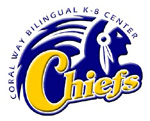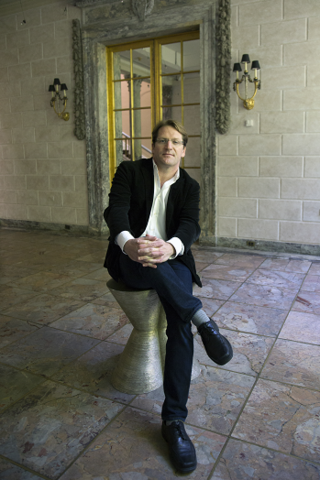In bilingual education, students are taught in two languages. It is distinct from learning a second language as a subject because both languages are used for instruction in different content areas like math, science, and history. The time spent in each language depends on the model. For example, some models focus on providing education in both languages throughout a student's entire education while others gradually transition to education in only one language. The ultimate goal of bilingual education is fluency and literacy in both languages through a variety of strategies such as translanguaging and recasting.
The French language is spoken as a minority language in the United States. Roughly 1.18 million Americans over the age of five reported speaking the language at home in the federal 2020 American Community Survey, making French the seventh most spoken language in the country behind English, Spanish, Chinese, Tagalog, Vietnamese, and Arabic. Several varieties of French evolved in what is now the United States:

The Council for the Development of French in Louisiana is Louisiana's Office of Francophone Affairs. It is a state agency whose multiple legislative mandates include developing opportunities to use the French language in tourism, economic development, culture, education and international relations. CODOFIL is governed by a board of 23 members and administratively placed within the Louisiana Office of Cultural Development's Department of Culture, Recreation and Tourism, overseen by the Lieutenant Governor. CODOFIL is the only state agency in the United States whose purpose is to serve a linguistic population.

A Gaelscoil is an Irish language-medium school in Ireland: the term refers especially to Irish-medium schools outside the Irish-speaking regions or Gaeltacht. Over 50,000 students attend Gaelscoileanna at primary and second levels on the island of Ireland. Additionally, more than 13,000 students are receiving their primary and second level education through Irish in the Gaeltacht. Gaelscoileanna and Irish-medium schools in the Gaeltacht are supported and represented by Gaeloideachas and An Chomhairle um Oideachas Gaeltachta & Gaelscolaíochta or COGG in the Republic of Ireland and by Comhairle na Gaelscolaíochta in Northern Ireland. The largest patron body of Gaelscoileanna in the Republic of Ireland is An Foras Pátrúnachta, although the vast majority of schools under their patronage are at primary level.

Language immersion, or simply immersion, is a technique used in bilingual language education in which two languages are used for instruction in a variety of topics, including maths, science, or social studies. The languages used for instruction are referred to as the L1 and the L2 for each student, with L1 being the student's native language and L2 being the second language to be acquired through immersion programs and techniques. There are different types of language immersion that depend on the age of the students, the classtime spent in L2, the subjects that are taught, and the level of participation by the speakers of L1.

The Elementary and Secondary Education Act (ESEA) was passed by the 89th United States Congress and signed into law by President Lyndon B. Johnson on April 11, 1965. Part of Johnson's "War on Poverty", the act has been one of the most far-reaching laws affecting education passed by the United States Congress, and was reauthorized by the No Child Left Behind Act of 2001.
Transitional bilingual education is an approach to bilingual education in which students first acquire fluency in their native language before acquiring fluency in the second language, where fluency is defined as linguistic fluency as well as literacy. This is in contrast to total immersion bilingual education in which students are directly immersed in the second language. Transitional bilingual education is among those most commonly implemented in public schools across the United States. The application of transitional bilingual education in the United States ultimately resulted from an effort to officially recognize Chicano and Latino identities with the passage of the Bilingual Education Act.

French immersion is a form of bilingual education in which students who do not speak French as a first language will receive instruction in French. In most French-immersion schools, students will learn to speak French and learn most subjects such as history, music, geography, art, physical education and science in French.
Education in Spain is compulsory and free for all children aged between 6 and 16 years and is supported by the national government together with the governments of each of the country's 17 autonomous communities.

The Coral Way Bilingual K–8 Center, built as Coral Way Elementary School in 1936, is a K-8 school located in Miami, Florida, United States (US). The school was a pioneer of bilingual education in 1963, when it began teaching through the mediums of English and Spanish with two groups of students. In 2004, the school expanded to includes grades 7 and 8.
Dual language is a form of education in which students are taught literacy and content in two languages. Most dual language programs in the United States teach in English and Spanish, but programs increasingly use a partner language other than Spanish, such as Arabic, Chinese, French, Hawaiian, Japanese, or Korean. Dual language programs use the partner language for at least half of the instructional day in the elementary years.
Structured English Immersion (SEI) is a total immersion bilingual education technique for rapidly teaching English to English language learners. The term was coined by Keith Baker and Adriana de Kanter in a 1983 recommendation to schools to make use of Canada's successful French immersion programs. The Canadian model was developed to encourage bilingualism through immersing Anglophones in the minority language and replaced many English-only laws in various Canadian provinces before the 1960s, while in the United States the same approach was advocated to force minority speakers to adopt English.

Oakland International High School opened in August 2007 with the support of The Internationals Network for Public Schools, Oakland Unified School District, and the Bill and Melinda Gates Foundation. The school targets a population of students, newly arrived immigrants, who have historically been under-served nationally, in California, and in Oakland.

Dallas International School (DIS) is an early childhood, elementary, middle, and high school in the North Dallas area in Dallas, Texas, United States, and is the only international private school in Dallas. The school delivers the curriculum primarily in English and French and the academic program is based on the French educational system. Dallas International is regionally accredited by the Independent Schools Association of the Southwest (ISAS). In 2016, DIS was ranked by the Washington Post as #24 in the nation for "America's Most Challenging High Schools. It is currently ranked #5 in top private schools in Dallas–Fort Worth metroplex by Niche.
Merrill Swain is a Canadian applied linguist whose research has focused on second language acquisition (SLA). Some of her most notable contributions to SLA research include the Output Hypothesis and her research related to immersion education. Swain is a Professor Emerita at the Ontario Institute for Studies in Education (OISE) at the University of Toronto. Swain is also known for her work with Michael Canale on communicative competence. Swain was the president of the American Association for Applied Linguistics in 1998. She received her PhD in psychology at the University of California. Swain has co-supervised 64 PhD students.
The International Bilingual School, later International School of Los Angeles (ISLA), was an international bilingual day school in Palos Verdes Estates, California, in the Los Angeles metropolitan area, serving students in Kindergarten through grade 9. It was founded by Tadao Hara. The school later relocated to nearby Torrance.

Arabic Immersion Magnet School (AIMS) is a magnet school in the Montrose area of Houston, Texas. A part of the Houston Independent School District (HISD), it currently covers elementary school grades. It uses a grant from the Qatar Foundation, and it is one of the first Arabic language immersion schools in the United States. It is a part of HISD's efforts to increase the number of bilingual students. Prior to 2019 the school was in the Houston Heights. Mahassen Ballouli became principal in Summer 2017 after the founding principal, Kate Adams, left.
In bilingual education, students are taught content areas like math, science, and history in two languages. Numerous countries or regions have implemented different forms of bilingual education.

Fabrice Jaumont is a French-born author and educator best known for his advocacy for dual-language bilingual education around the world. He is the author of several books translated in multiple languages.
Kia Aroha College is a co-educational composite school in the South Auckland suburb of Clover Park, New Zealand, catering for students from Year 1 to Year 13. The school opened in 1981 as Clover Park Intermediate School, later becoming a middle school and in 2011, merged with Te Whānau o Tupuranga to become Kia Aroha College. There are two bilingual streams within the school: Te Whānau o Tupuranga, which offers bilingual courses for high school students in Māori, and the Fanau Pasifika section, which offers bilingual education in Samoan and Tongan.










